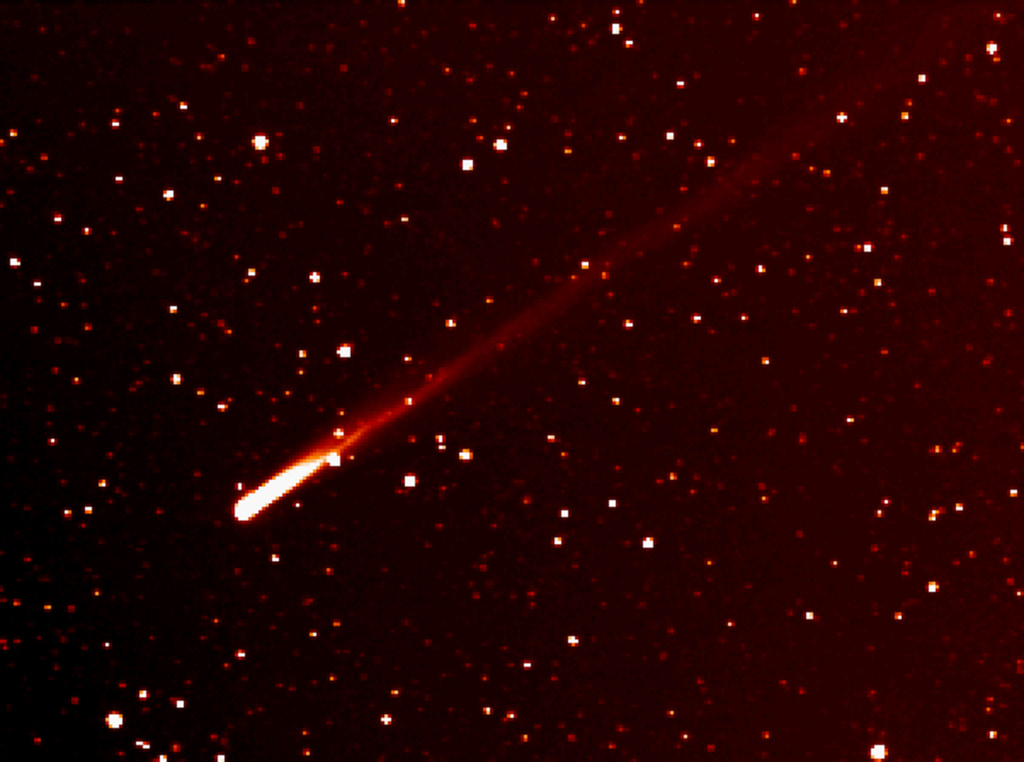Comet NEOWISE spotted by more NASA spacecraft (video, photos)
NASA's Parker Solar Probe (PSP) isn't the only spacecraft doing some comet watching these days.
PSP snapped a gorgeous image of the bright Comet NEOWISE on July 5, two days after the icy wanderer reached perihelion, its closest approach to the sun. The PSP photo clearly shows twin tails streaming from the comet, one made of dust and the other of ionized gas.
And two other sun-studying spacecraft captured imagery of Comet NEOWISE, in the leadup to its perihelion passage.
Related: How to see Comet NEOWISE in the night sky this month
More: Amazing photos of Comet NEOWISE from the Earth and space
NASA's Solar and Terrestrial Relations Observatory (STEREO) mission took one photo on June 24 that makes NEOWISE look like a fireball streaking through the night sky. And the Solar and Heliospheric Observatory (SOHO), a joint effort between NASA and the European Space Agency, tracked NEOWISE's inbound trek for nearly a week, from June 22 through June 27.
SOHO uses an instrument called a coronagraph to block out the sun's blindingly bright disk, allowing scientists to view the sun's thin outer atmosphere, called the corona, as well as objects zooming near our star. This strategy makes the spacecraft a prolific comet hunter; SOHO recently discovered its 4,000th icy wanderer, as a matter of fact.
NEOWISE spotting isn't restricted to such advanced, sharp-eyed spacecraft. The comet has been visible to the naked eye for viewers in clear, dark predawn skies for more than a week now, and an evening show is in the works as well. NEOWISE should start becoming visible low in the northwestern sky just after sunset any day now.
Breaking space news, the latest updates on rocket launches, skywatching events and more!
You can learn more about the comet, which was discovered in March of this year by NASA's Near-Earth Object Wide-field Infrared Survey Explorer spacecraft (hence the name), via a pair of NASA events tomorrow (July 15).
The agency will host a Comet NEOWISE "NASA Science Live" broadcast at 3 p.m. EDT (1900 GMT) tomorrow, then follow that up with a news conference at 4 p.m. EDT (2000 GMT). Participants in the news conference are:
- Lindley Johnson, planetary defense officer and program executive of NASA’s Planetary Defense Coordination Office, NASA headquarters
- Emily Kramer, co-investigator on the Near-Earth Object Wide-field Infrared Survey Explorer (NEOWISE) science team, NASA's Jet Propulsion Laboratory
- Amy Mainzer, NEOWISE principal investigator, University of Arizona
You can follow both events live here at Space.com, courtesy of NASA, or directly via the agency.
SOHO launched in 1995, and the twin STEREO craft got aloft in 2006. The STEREO-B probe went silent in 2014, but STEREO-A, which took the recent NEOWISE picture, is still going strong. PSP lifted off in August 2018 and has already flown faster and closer to the sun than any other probe in history.
Mike Wall is the author of "Out There" (Grand Central Publishing, 2018; illustrated by Karl Tate), a book about the search for alien life. Follow him on Twitter @michaeldwall. Follow us on Twitter @Spacedotcom or Facebook.

Michael Wall is a Senior Space Writer with Space.com and joined the team in 2010. He primarily covers exoplanets, spaceflight and military space, but has been known to dabble in the space art beat. His book about the search for alien life, "Out There," was published on Nov. 13, 2018. Before becoming a science writer, Michael worked as a herpetologist and wildlife biologist. He has a Ph.D. in evolutionary biology from the University of Sydney, Australia, a bachelor's degree from the University of Arizona, and a graduate certificate in science writing from the University of California, Santa Cruz. To find out what his latest project is, you can follow Michael on Twitter.


